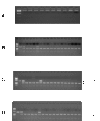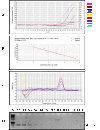Breast cancer and human papillomavirus infection: no evidence of HPV etiology of breast cancer in Indian women
- PMID: 21247504
- PMCID: PMC3036645
- DOI: 10.1186/1471-2407-11-27
Breast cancer and human papillomavirus infection: no evidence of HPV etiology of breast cancer in Indian women
Abstract
Background: Two clinically relevant high-risk HPV (HR-HPV) types 16 and 18 are etiologically associated with the development of cervical carcinoma and are also reported to be present in many other carcinomas in extra-genital organ sites. Presence of HPV has been reported in breast carcinoma which is the second most common cancer in India and is showing a fast rising trend in urban population. The two early genes E6 and E7 of HPV type 16 have been shown to immortalize breast epithelial cells in vitro, but the role of HPV infection in breast carcinogenesis is highly controversial. Present study has therefore been undertaken to analyze the prevalence of HPV infection in both breast cancer tissues and blood samples from a large number of Indian women with breast cancer from different geographic regions.
Methods: The presence of all mucosal HPVs and the most common high-risk HPV types 16 and 18 DNA was detected by two different PCR methods - (i) conventional PCR assays using consensus primers (MY09/11, or GP5+/GP6+) or HPV16 E6/E7 primers and (ii) highly sensitive Real-Time PCR. A total of 228 biopsies and corresponding 142 blood samples collected prospectively from 252 patients from four different regions of India with significant socio-cultural, ethnic and demographic variations were tested.
Results: All biopsies and blood samples of breast cancer patients tested by PCR methods did not show positivity for HPV DNA sequences in conventional PCRs either by MY09/11 or by GP5+/GP6+/HPV16 E6/E7 primers. Further testing of these samples by real time PCR also failed to detect HPV DNA sequences.
Conclusions: Lack of detection of HPV DNA either in the tumor or in the blood DNA of breast cancer patients by both conventional and real time PCR does not support a role of genital HPV in the pathogenesis of breast cancer in Indian women.
Figures


Similar articles
-
[Investigation of HPV-DNA in cervical smear samples by two different methods: MY09/11 consensus PCR and type-specific real-time PCR].Mikrobiyol Bul. 2012 Oct;46(4):624-36. Mikrobiyol Bul. 2012. PMID: 23188576 Turkish.
-
Assessment of human papillomavirus in lung tumor tissue.J Natl Cancer Inst. 2011 Mar 16;103(6):501-7. doi: 10.1093/jnci/djr003. Epub 2011 Feb 3. J Natl Cancer Inst. 2011. PMID: 21293027 Free PMC article.
-
Evaluation of primers and PCR performance on HPV DNA screening in normal and low grade abnormal cervical cells.Asian Pac J Cancer Prev. 2007 Apr-Jun;8(2):279-82. Asian Pac J Cancer Prev. 2007. PMID: 17696746
-
Human Papillomavirus Genome based Detection and Typing: A Holistic Molecular Approach.Curr Mol Med. 2019;19(4):237-246. doi: 10.2174/1566524019666190405120441. Curr Mol Med. 2019. PMID: 30950352 Review.
-
Association of human papillomavirus with breast cancer: a new perspective on an old debate.Future Oncol. 2022 Jul;18(22):2483-2494. doi: 10.2217/fon-2021-1158. Epub 2022 Jun 13. Future Oncol. 2022. PMID: 35695559 Review.
Cited by
-
Association of High Risk Human Papillomavirus and Breast cancer: A UK based Study.Sci Rep. 2017 Feb 27;7:43591. doi: 10.1038/srep43591. Sci Rep. 2017. PMID: 28240743 Free PMC article.
-
Co-prevalence of Epstein-Barr virus and high-risk human papillomaviruses in Syrian women with breast cancer.Hum Vaccin Immunother. 2016 Jul 2;12(7):1936-9. doi: 10.1080/21645515.2016.1139255. Epub 2016 Apr 15. Hum Vaccin Immunother. 2016. PMID: 27082145 Free PMC article.
-
Human Papillomaviruses-Related Cancers: An Update on the Presence and Prevention Strategies in the Middle East and North African Regions.Pathogens. 2022 Nov 19;11(11):1380. doi: 10.3390/pathogens11111380. Pathogens. 2022. PMID: 36422631 Free PMC article. Review.
-
HPV-Associated Breast Cancer: Myth or Fact?Pathogens. 2022 Dec 9;11(12):1510. doi: 10.3390/pathogens11121510. Pathogens. 2022. PMID: 36558844 Free PMC article. Review.
-
Interrelated Oncogenic Viruses and Breast Cancer.Front Mol Biosci. 2022 Mar 28;9:781111. doi: 10.3389/fmolb.2022.781111. eCollection 2022. Front Mol Biosci. 2022. PMID: 35419411 Free PMC article. Review.
References
-
- National Cancer Registry Programme Report (Indian Council of Medical Research) 2005.
-
- Shukla S, Bharti AC, Mahata S, Hussain S, Kumar R, Hedau S, Das BC. Infection of human papillomaviruses in cancers of different human organ sites. Indian J Med Res. 2009;130:222–233. - PubMed
Publication types
MeSH terms
Substances
LinkOut - more resources
Full Text Sources
Medical
Miscellaneous

